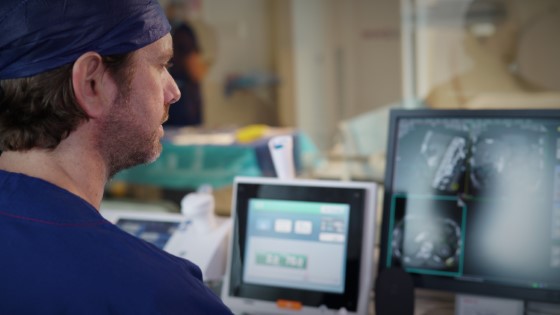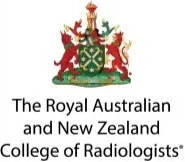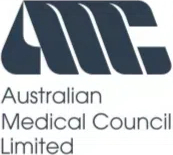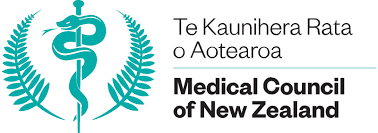Interventional Radiology
About IR in Australia and
New Zealand
In Australia and New Zealand, Interventional Radiology (IR) is a well-established medical specialty and is offered at many public and private hospitals. Interventional radiologists are trained in both diagnostic and procedural radiology, and often work closely with other specialists such as oncologists, cardiologists, and nephrologists to provide multi disciplinary patient care.
This multidisciplinary approach ensures that patients receive the best possible care, and that their treatment is tailored to their specific needs.
In recent years, there has been a growing demand for Interventional Radiology services across Australasia. This is due to the many benefits that it offers to patients, such as a faster recovery time, lower risk of complications, and more precise targeting of the area of concern. As a result, the field of interventional radiology is expected to continue to grow in the coming years.
About Interventional Radiology
Interventional radiology (IR) encompasses a wide range of procedures that serve both diagnostic and therapeutic purposes for a variety of conditions. These procedures are instrumental in the diagnosis and treatment of conditions such as cancer, blood vessel diseases, and organ dysfunction. Some commonly performed IR procedures include:
- Angiography: Angiography is an imaging procedure that employs X-rays to visualise blood vessels in the body. It is particularly useful in diagnosing and treating conditions like arterial blockages in the coronary or peripheral arteries. By providing detailed images of the blood vessels, angiography aids in identifying areas of narrowing or obstruction, guiding subsequent treatment decisions.
- Embolisation: Embolisation is a procedure that involves the intentional blockage of blood flow to a specific area of the body. It is employed to treat various conditions, including tumours or uncontrolled bleeding. By introducing specialised materials, such as small particles or coils, into the blood vessels supplying the targeted area, embolisation effectively cuts off the blood supply, thereby shrinking or eliminating the abnormality.
- Biopsy: Biopsy is a procedure that entails the extraction of a small tissue sample for further examination. It is a valuable diagnostic tool used to identify and characterise various conditions, including cancer. Interventional radiologists employ image guidance, such as ultrasound or CT scans, to precisely guide the biopsy needle to the affected area, ensuring accurate and representative tissue sampling.
Interventional radiology offers a diverse array of procedures that contribute to the diagnosis and treatment of a wide variety of conditions. If you’d like to learn more about these procedures and the conditions that they can be used to treat, please click through to our Procedures section to learn more.
The Future Of IR
The future of interventional radiology holds significant promise as technology continues to advance and healthcare evolves, influenced by a dynamic interplay of technological advancements, healthcare policies, and evolving patient needs. As these factors continue to evolve, interventional radiology is likely to play an increasingly vital role in modern healthcare.
Education
Interventional Radiology is a distinct subspecialty of clinical radiology that combines an in-depth understanding of clinical radiology with advanced procedural skills and clinical management. An Interventional Radiologist (IR) works as the primary specialist caring for patients who undergo interventional procedures or as part of a multidisciplinary patient care team. The IR has direct involvement in the full cycle of clinical care.




Training in Interventional Radiology in Australia and New Zealand
Training starts within the Royal Australian and New Zealand College of Radiologists (RANZCR) Clinical Radiology Training Program, where registrars develop a range of basic procedural and clinical competencies. The training program lays the foundations required for interventional practice, which can be built upon by undertaking a Fellowship in IR upon receiving the FRANZCR.
FRANZCR can also be achieved by International Medical Graduates (IMGs) through the Specialist Recognition pathway.
RANZCR is accredited by the Australian Medical Council (AMC) to conduct IMG assessments on behalf of the Medical Board of Australia (MBA).
In New Zealand, RANZCR assesses IMGs on behalf of the Medical Council of New Zealand (MCNZ) to determine the pathway to medical registration with a vocational scope of practice.
RANZCR and IRSA determine that there are two levels of interventional radiology – Basic and Advanced.
All FRANZCR graduates in clinical radiology are qualified to perform basic procedural radiology.
Basic procedures have been identified as –
- Basic diagnostic angiography and interventional techniques
- Basic diagnostic angiography
- Nephrostomy
- Abscess and cyst drainage and biopsy
- Simple venous access
- Breast localisation
- Image-guided biopsies
- Joint arthrography and injection
- Spinal tap, epidural and spinal nerve root block Other non-Advanced interventional procedures.
Advanced procedures require further dedicated training, examples of which include:
- All vascular interventional procedures other than basic diagnostic angiography, such as angioplasty, stenting, thrombolysis, thrombectomy, embolisation, retrieval of foreign bodies and laser and mechanical atherectomy.
- Venous and arteriovenous graft interventions other than basic diagnostic venography or fistulography, such as angioplasty, stenting, thrombolysis, thrombectomy, sclerotherapy, and caval filter insertion.
- Biliary and portal venous intervention, such as percutaneous transhepatic biliary drainage and/or stenting, TIPSS, BRTO and shunt embolisation.
- Interventional Oncology, such as biopsies, ablation, bland embolisation, chemoembolisation and radioembolisation, palliative interventional pain procedures.
- Thoracic intervention, such as embolisation of pulmonary AVMs, pulmonary embolectomy/thrombolysis, bronchial stents, occlusion of broncho-pleural fistulae and bronchial artery embolisation.
Gastrointestinal intervention, such as oesophageal and duodenal stents, percutaneous gastrostomy, gastrointestinal vascular procedures other than diagnostic angiography, such as embolisation and transplant intervention.
- Urological intervention, such as renal artery embolisation, prostate artery embolisation, gonadal vein embolisation, nephrostomy and ureteric stenting.
- Gynaecological intervention, such as fallopian tube recanalisation, uterine artery embolisation, temporary aortic/iliac artery occlusion.
- Orthopaedic intervention, such as percutaneous vertebroplasty.
- Other advanced interventional procedures
Radiologists who wish to equip themselves to perform Advanced procedures requiring specialised interventional skills, must undertake further training in these procedures (such as via a fellowship position in Interventional Radiology) to ensure adequate training and competence.
Fellowships for Interventional Radiology are typically at least one year in duration and dedicated specifically to Interventional Radiology training. Once the Fellowship is completed, many IRs choose to sit the European Board of Interventional Radiology (EBIR) examination and many currently practicing IRs also choose to sit the examination.
The European Board of Interventional Radiology (EBIR)
The European Board of Interventional Radiology (EBIR) is a voluntary examination designed to evaluate IRs on the clinical and technical knowledge necessary to carry out safe and effective treatments for patients. By taking this examination, IRs in Australia and New Zealand can certify their expertise.
The EBIR is based on the European Curriculum and Syllabus for Interventional Radiology produced by the Cardiovascular and Interventional Radiology Society of Europe (CIRSE) and is endorsed by the European Union of Medical Specialists. This document has been endorsed by IRSA and the Examination has received the endorsement of IRSA and RANZCR since 2014. Internationally, the EBIR is the most widely recognised diploma documenting training in Interventional Radiology.
Maintaining competence
In Australia and New Zealand, clinical radiologists who are Fellows of RANZCR participate in a mandatory program of continuing professional development (CPD) organised and audited by RANZCR. CPD provides the opportunity for Fellows to engage in activities relevant to their professional development, educationally and in other ways. IRs are encouraged to attend national and international scientific IR meetings regularly. Participating in relevant courses for trained IR’s including CPD activities that incorporate audit and review activities encourages continuous advancement of skills and knowledge.
In addition to undertaking mandatory CPD, to maintain competence, regular peer review and appraisals should take place in the workplace.
Membership of IRSA and its offered affiliate international associations and education events is recommended for IR’s wishing to maintain competence in IR.
Overall, Interventional radiology is a highly specialised and rapidly growing field in Australia. Its minimally invasive and targeted approach to treatment offers many benefits for patients, and its use is expected to continue to expand in the coming years. With a multidisciplinary approach, Interventional radiologists are equipped to diagnosis and treat various conditions with a high degree of accuracy, offering patients.
